What is Manga Allman Magazine?
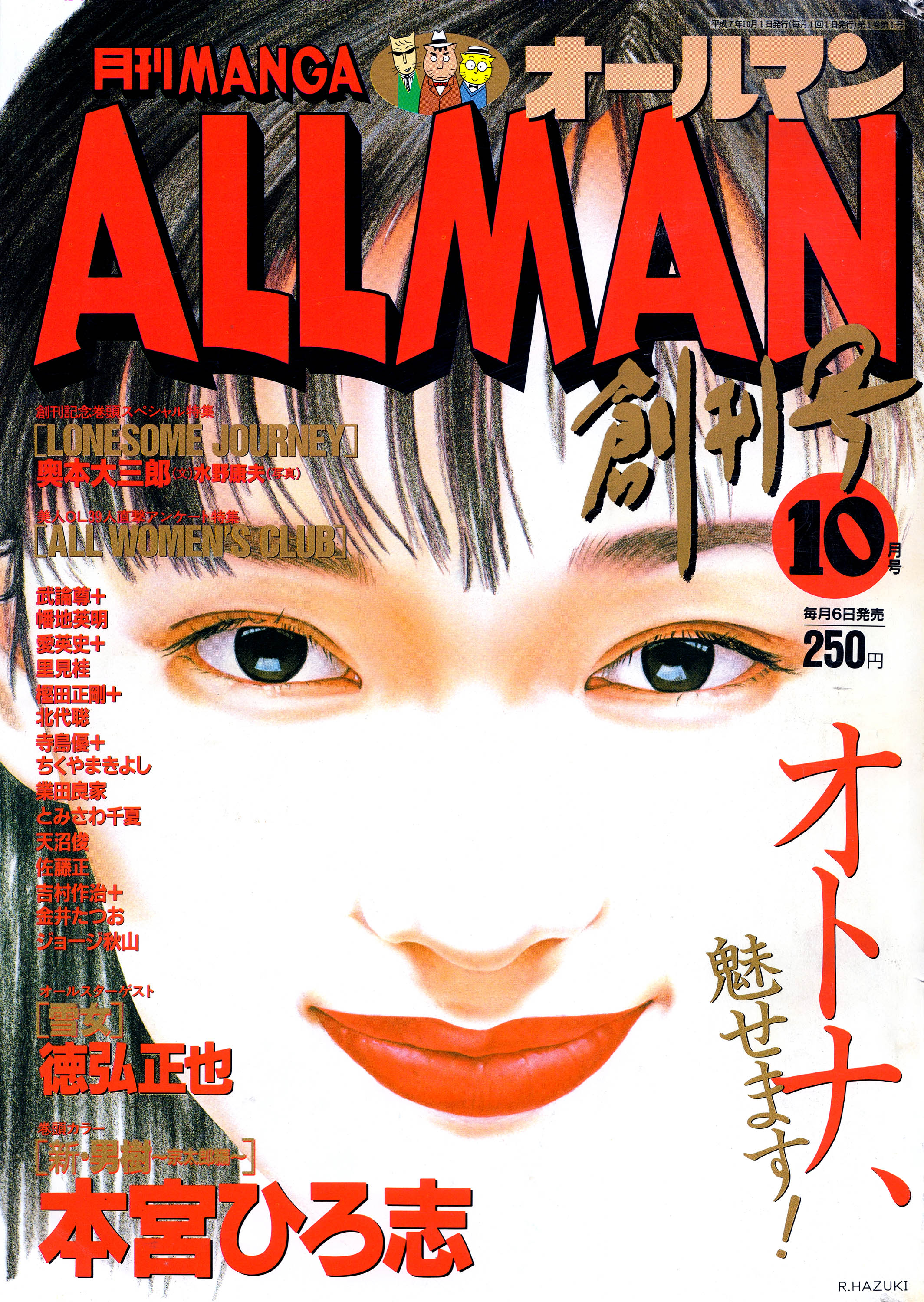
Manga Allman was a seinen Japanese manga magazine that was created by Shueisha and ran from 1995 through 2002. The magazine would focus towards young to middle-aged adult men and have stories that frequently involved businesses, adult relationships, and historical/wartime dramas. Nudity as well as direct depictions sex was frequently shown in many of the manga titles that ran in the magazine, often within the first few pages of a new series.
The magazine would often contain oneshots from various manga creators which were listed under their “Manga All Stars” line-up. There was also an ongoing “ALL MANGA PRIZE” contest for new and upcoming artists, which would have their works printed in the magazine. Many of the serializations within the magazine only ran for a short period with the exception of it’s few breakout titles. The magazine would often have serializations based around 4-panel gag manga.
With a page count of around 200 pages per issue, the magazine was only bound by 2 staples. The overall size was similar to other Shueisha magazines similar to the ones focusing on fashion. With the larger size it would often contain color pages for it’s articles as well as bichrome (black & orange) color pages in the late 90s. Articles would focused around topics such as wine, continuing to cater towards an older male audience. Most issues featured a color opening for the lead series (3-4 pages), and a center color page for another series they were highlighting.
Magazine Origins
In July 1991, Shueisha’s Super Jump magazine moved from a monthly magazine into a twice-a-month release schedule. This magazine was focused towards a seinen audience, a younger to middle-aged men. After establishing itself in the early 1990s, it started a new spin-off magazine called Super Jump α (Super Jump Alpha – スーパージャンプアルファ) that would run sporadically. With the expansion back into the monthly magazine market, two spin-off magazines were then born out of Super Jump Alpha. A new magazine called Oh Super Jump (オースーパージャンプ) would take up the sporadic release cycle while Manga Allman would become a new monthly magazine.
The key editorial staff that would run the new Manga Allman magazine were transferred from the existing Super Jump staff. Some of the magazine’s first titles came from earlier Oh Super Jump issues.
The first issue of Monthly Manga Allman (月刊MANGAオールマン) released on September 6th, 1995. The first issue had a cover date of October 1st, 1995. As with most manga magazines, the cover date is not the actual release date. The magazine would run monthly for an entire year, and ended it’s monthly run with the September issue in 1996. From here the magazine then moved to a twice-a-month release cycle and just be known as Manga Allman (MANGAオールマン).
With a twice-a-month release, the magazine would until it’s final issue in July 2002 (with cover date of August 7th, 2002). The magazine was abruptly cancelled with only notice of cancellation included in that final issue. Some of the titles in the magazine were then moved into other Shueisha magazines to finish their serialization. The official website for the magazine was then closed extremely quickly at the end of August 2002 and removed all of the content on it.
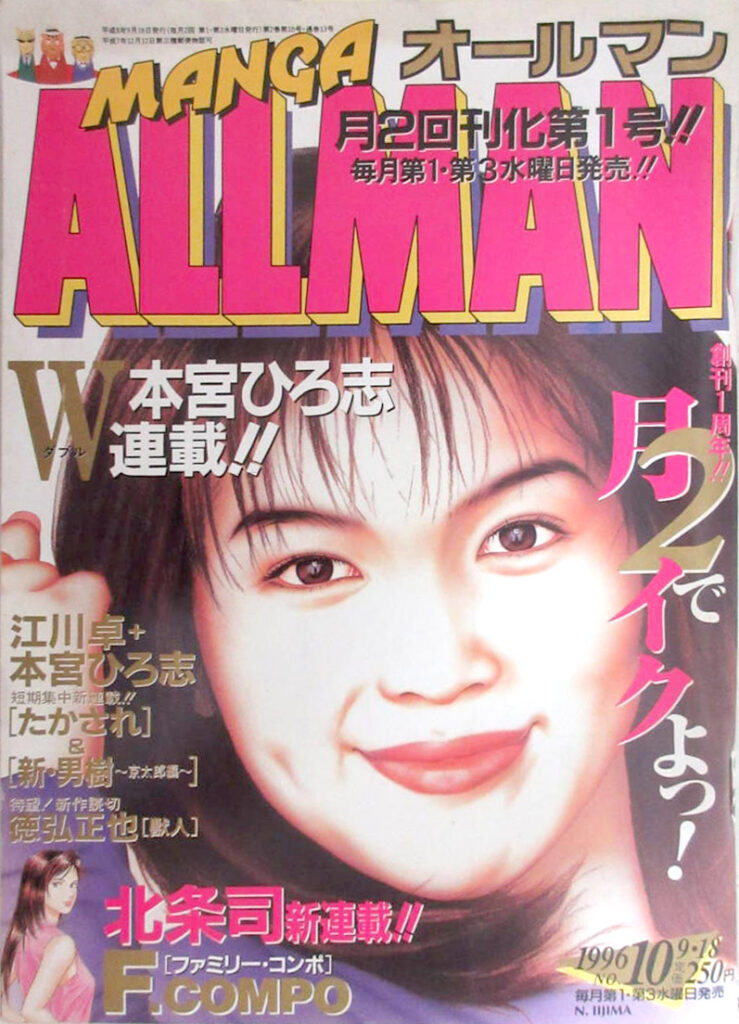
Magazine Cover Design
For roughly the first 55 issues of the magazine, Shunji Tatzumarua (辰村俊治) provided the illustration for the cover image of the magazine. Most of the illustrations were a stylized portrait of a famous female artist, actress, or idol. Within the magazine there would be a small article providing information about the person shown on the cover. The art from the cover design for each issue was also given out as phone-card prizes to readers who entered the contests by mailing in a postcard.
Starting around the middle of 1998 the magazine the cover design would then take a more traditional approach with a rotating design based on the popular titles from within the magazine drawn by the individual artists. This shift was also representative of a shift in the content of the magazine and was timed with a new TV drama that was going to air based on the Sommelier manga. The additional columns that were targeted toward middle-aged men were reduced and more diverse manga titles were added to the line-up. This trend would continue until the end of the magazine’s run.
Table of Contents
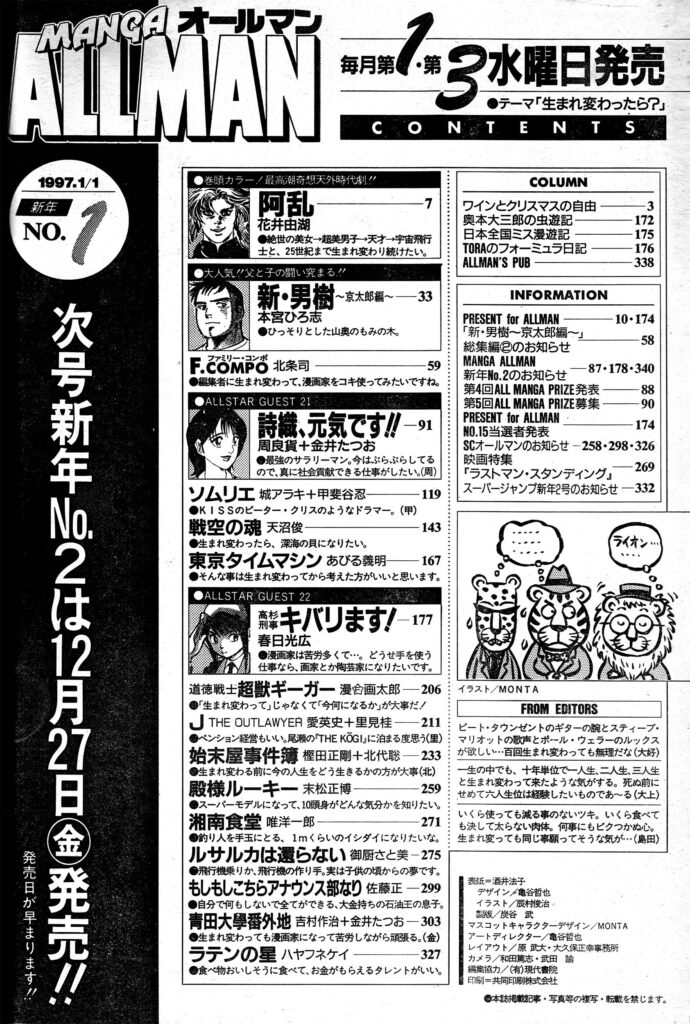
As with most manga magazines, the table of contents, functions as an index at the back of the magazine and lists all of the titles and articles within the issue. From 1995 through 1998, each author was also allowed to include their own personal comment to the readers. Starting in 1999, the individual author comments were replaced with a single question in which the authors would reply.
In addition to the author comments, the 3 magazine editors also included their comments in each issue.
A small comic strip would often be included on the Table of Contents page. Until 1998, this comic was often a single panel drawn by the artist MONTA and would feature the adventures of 3 cats. These cats functioned as the mascots for the magazine. Starting in 1998, the comic would be replaced with a four-panel comic drawn by SEKIRARA and feature the adventures of a man dressed in a chicken costume. Then starting in 2001, the comic would be replaced by a rotating set of stories and no longer feature a single mascot.
Notable Series
While the magazine ran for over 6 years, there was very few major hits for the magazine. Some of the titles wouldn’t become major hits until after the magazine had ended. Most of the series only had a single print run for the volumes and some series never had collected volumes for the chapters.
F.Compo
Starting in September 1996, this series by Tsukasa Hojo (北条 司) ran for 14 volumes with 102 chapters. The series ended in the magazine on November 15th, 2000 and was one of the magazine’s longest running series. The creator has other previous hits such as City Hunter that ran in Weekly Shonen Jump. With the exception of his two oneshots for Splash, this was his first magazine that he was serialized in outside of Weekly Shonen Jump at the time and was some of the early creator name recognition for the magazine.
Nozaki Shuhei – Auditor of Aozora Bank (Kansayaku Nozaki Shuhei)
This series started in the 1998 issue 17 of Manga Allman and would run for 12 volumes under the Manga Allman label. With the cancellation of the magazine, the series was moved into Business Jump, and the last 5 chapters that ran in Manga Allman would be the start of the sequel series. The series would also be featured on the final issue cover for Manga Allman. In 2018 the series received a Japanese live-action TV adaptation, followed by the sequel in 2020. The original series also received a Korean live-action TV adaptation in 2019 under the title of The Banker (더 뱅커).
Sommelier
Starting in the 5th issue of Manga Allman in 1996, the first series in the Sommelier (ソムリエ) manga series ran for a total of 72 chapters and was drawn by Shinobu Kaitani. The series then had a further reboot with a new artist, Mikio Shimizu, in Manga Allman with the title New Sommelier: Shun’s Wine (新ソムリエ 瞬のワイン). The series then had another reboot with la sommeliere (ソムリエール), this time drawn by Katsunori Matsui, in Business Jump from 2006 through 2011. Within each of the reboots of the series, it focuses on a different cast of characters. In 1998, the original series also received a live action TV adaptation which ran for 11 episodes. This was the only TV drama that aired based on one of the series in the magazine during its publication.
Senkuu no Tamashii
Prior to joining Manga Allman, this series started as a series of oneshots that ran in Super Jump and Super Jump Alpha between 1993 and 1995. Then with the first issue of the monthly Manga Allman it continued the story starting with the 7th chapter and all of the volume releases would be under the Manga Allman brand. The series would in total run for 95 chapters across 12 volumes.
Takasugi Keiji Kibarimasu!
Starting in 1996 and running until the final issue of Manga Allman, this series would run for 131 chapters across 15 volumes in total. While this series may not have a large name recognition, it was a consistent series throughout the magazine’s run. The only series that ran longer, was the gag manga Shonan Shokudo (湘南食堂), which ran for 143 chapters.
Hiroshi Motomiya Series
While none of Hiroshi Motomiya’s (本宮ひろ志) series ran for a long period of time, this legendary author had his home in this magazine. His name was attached to several manga series which would often get preferred placements and promotions, such as on ads and getting color pages within the magazine. Additionally many of his assistants were featured in the magazine with their own serializations and oneshots. Many other series took inspiration from his work and was the real focal point of the magazine.
If you are looking to dig in deeper into what was in every issue of the Manga Allman magazine, we have a comprehensive listing broken down by year. This includes a Table of Contents (TOC), chapter numbers, release dates, manga summaries, and author bios. As this magazine has been mostly forgotten and has very limited documentation, this project is the most definitive source for all of these series. When more information becomes available, we will be updating these pages to keep it as accurate as possible. We hope that you find this deep dive into a single magazine’s history enlightening and spurs discussion and further archival of the history of manga around the world.
Manga Allman Issues by Year:
If you want to know more about this archival project or have additional information to provide, you can reach out to us at contact information at the bottom of our Usage & Citation page! We are open for discussions on podcasts/streams, articles, or just general questions and feedback!


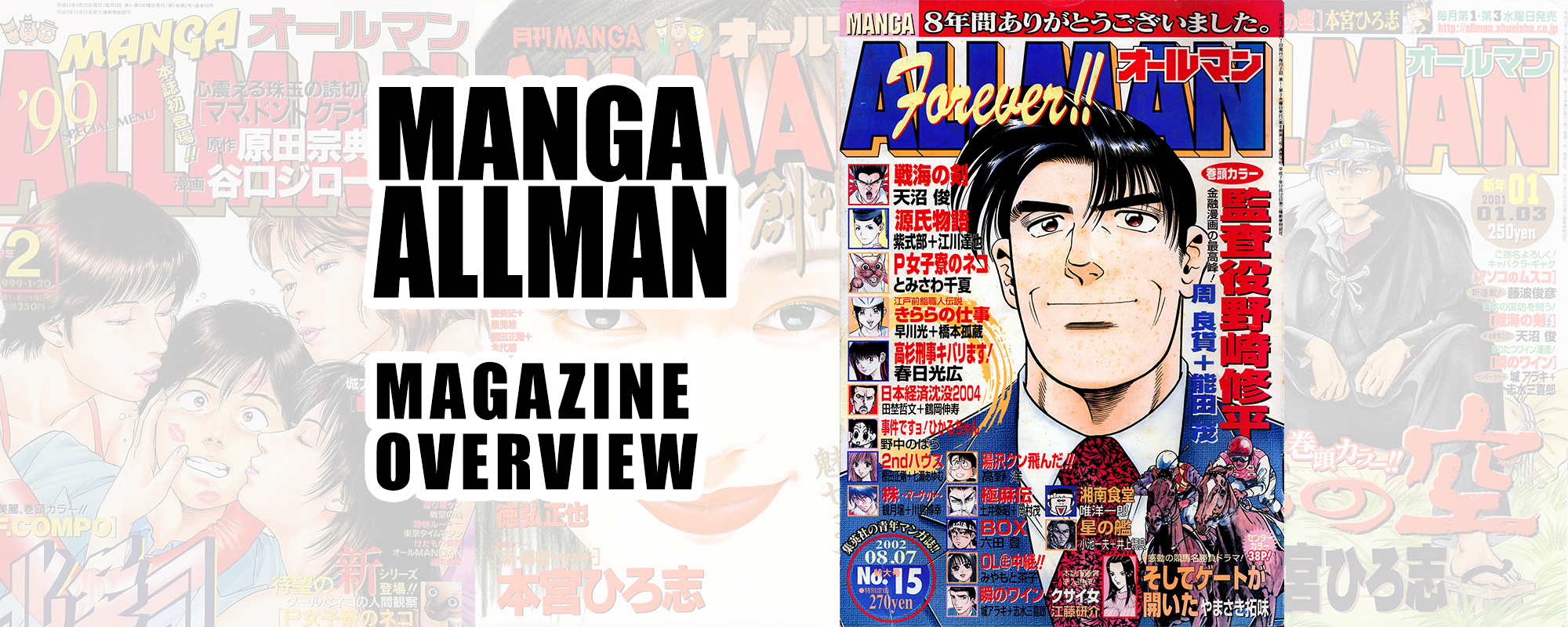
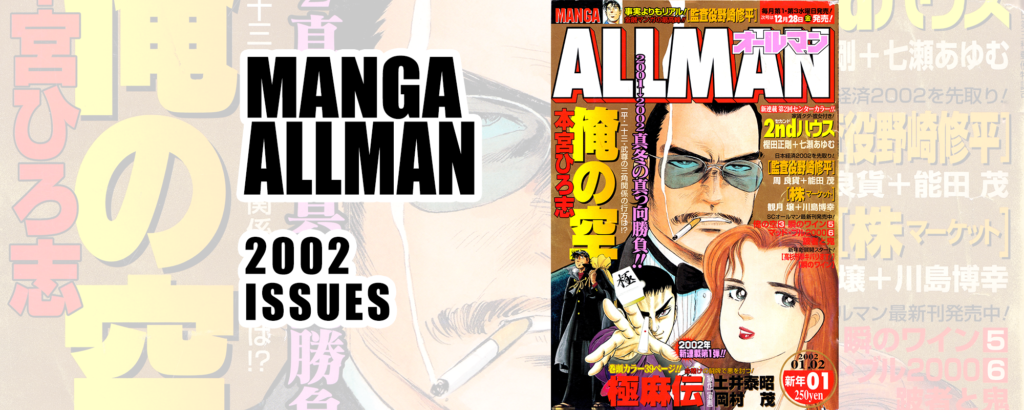
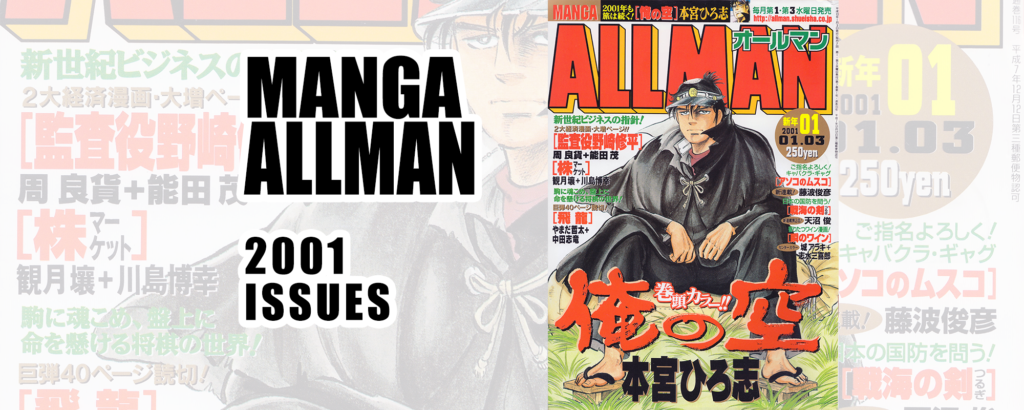
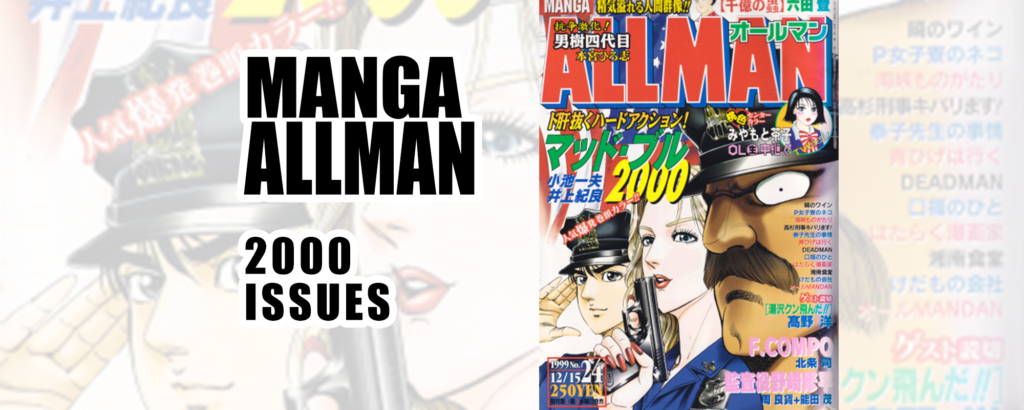
One Comment
Comments are closed.